Estimated reading time: 4 minutes
There is no denying that sick animals cost money. Aside from the veterinary, medicine and labour costs, there is also the likelihood of a loss of milk and meat production, and a decline in product quality that could render the product unacceptable for human consumption. Mortalities among sick animals add to these costs. Then, of course, there are subclinical or undiagnosed diseases that can erode our profits even further.
Impact at farm level
Having a thorough understanding of the true benefit of improved animal health requires an understanding of preventable losses. Preventable losses are often calculated at national or regional levels using computer models, but calculating these losses, taking into account all epidemiological principles such as the role of the host, environment and pathogens, at farm level are also crucial.
Part of this approach involves calculating the risk certain animal health issues pose to a farm, as well as its effect on the farm’s viability. The interaction between disease control and other management activities on the farm, and its effect on the environment, must also be considered.
National and international impact
Controlled diseases such as bovine tuberculosis (BT) and bovine brucellosis (BB) not only add to the producer’s expenses but, at an international level, also constrains animal product exports to other countries. To guarantee protection for all the country’s producers, everyone must participate in TB and BB schemes and have their animals tested regularly for these diseases.
Due to the national financial impact of these diseases, there are many countries that have eradicated it and are working on other diseases such as mycoplasma (New Zealand), foot-and-mouth disease (several countries), bovine viral diarrhoea (BVD), infectious bovine rhinotracheitis (IBR) and enzootic bovine leukosis (Sweden). If South Africa wants to be a competitive world-market player, the health status of our animals must be elevated, especially in respect of notifiable and controlled diseases.
Preventive treatment
In terms of animal health and welfare, disease control should be preventive rather than reactive. Preventive animal health has its price, but less so than the losses due to animal diseases.
In terms of epidemic (e.g. foot-and-mouth disease) and zoonotic (e.g. BT and BB) diseases the state will usually take the lead, whereas endemic disease prevention (e.g. clostridial diseases and mastitis) remains the responsibility of the producer. Compared to commercial pig and poultry producers, cattle and sheep producers are sometimes slow to act when it comes to disease prevention and biosecurity.
Calculating the cost of disease
Many studies have been done regarding the cost of disease. Methodology, period, area, type of farming enterprise and populations occasionally cloud the results, especially when costs outside of the farm gate and lower down the value chain are also considered. There have been several publications regarding economic losses due to diseases such as mastitis, but even here there is reasonable variation as far as calculated losses are concerned.
There must be agreement within a country on how these calculations are done. This will ensure that the best economic decisions are taken regarding prevention, and that it will not be a ‘fear-driven’ decision based on wrong calculations.
Contributing factors
Keeping an eye on other diseases or conditions that may contribute to these disease losses is crucial. Losses due to, for example, subclinical mastitis will be higher in a herd that also has underlying immunosuppressive diseases such as BVD, IBR or bovine leukosis. Quantifying economic losses due to reproductive problems are even more difficult when breeding and genetics are considered.
It is well known that breeding for higher milk production may have a negative effect on reproduction. A slightly extended intercalving period (ICP) and higher milk production are not necessarily a bad thing. More milk from fewer cows can boost income while having a positive effect on the environment, among other things, due to reduced methane gas production and a smaller carbon footprint.
Always assess the cost of cattle diseases in the context of the specific farm. This allows for an assessment of the economic importance of animal diseases for the producer. External factors such as milk and meat prices must also be considered when calculating partial budgets with regard to losses.
Zoonoses, which cause illness and/or death in people, will usually receive preferential attention when it comes to the economics of prevention or treatment. However, the detrimental effect that other diseases have on the farming branch’s eventual profitability, as well as animal welfare, should be top of mind.
Actual cost of disease control
Reliable, relevant figures relating to disease losses are essential, and preventable losses should always be part of such a calculation, before and after making adjustments to management and the use of agents and/or vaccines.
Actual and preventable losses due to subclinical diseases, excessive culling, rearing costs, treatment costs, milk or meat losses, and the cost of a programme must all be considered to determine a new product or programme’s actual return on investment. – Dr Chris van Dijk
For more information, send an email to Dr Chris van Dijk at dairyvetza@outlook.com.







